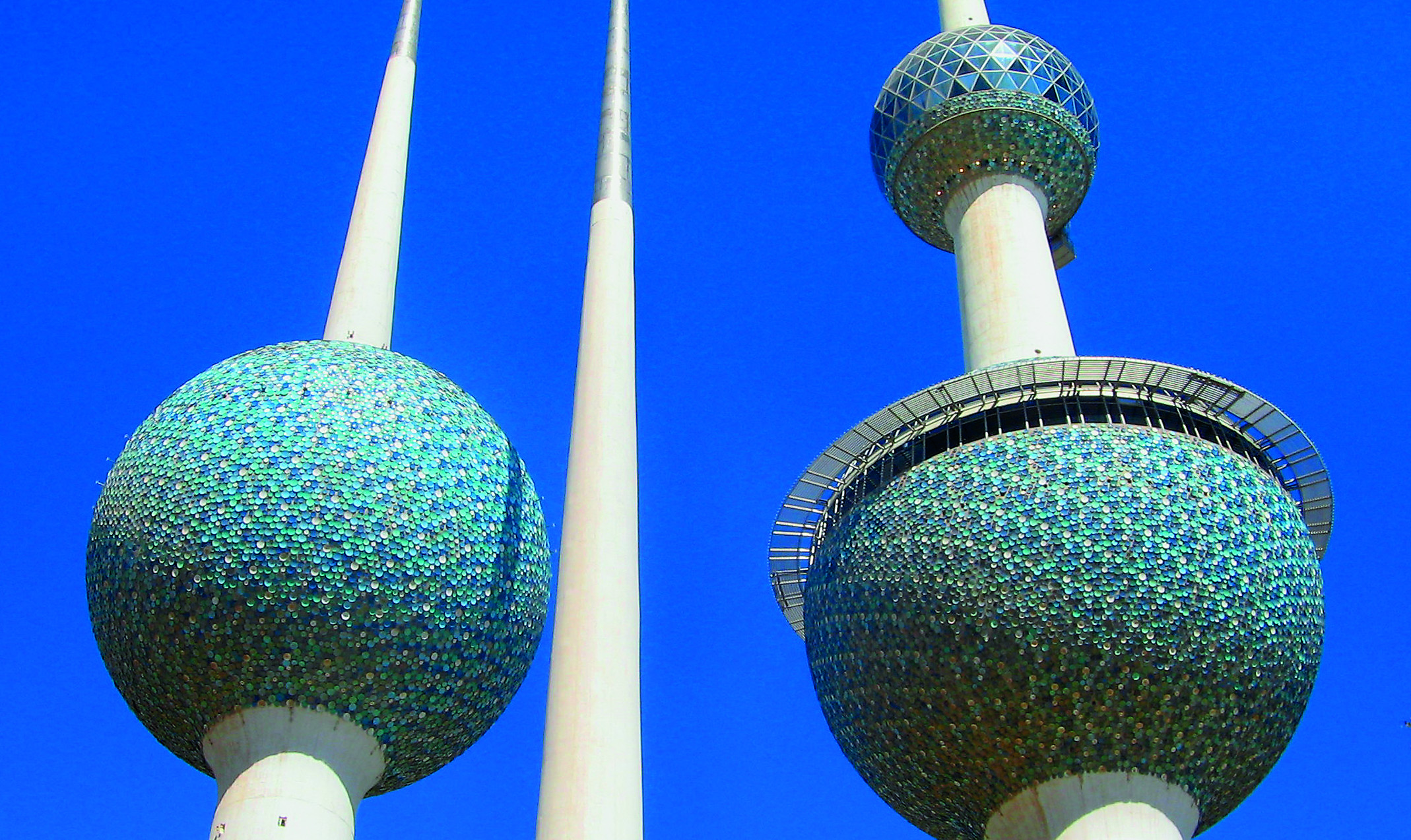Kuwait City, a gleaming metropolis of designer shopping malls, hotels and restaurants, has evolved dramatically in the last couple of decades. As the capital of the state of Kuwait, it is the heart, limbs and brain of the country, home to 85% of the country’s population and containing Kuwait’s parliament, most governmental offices and the majority of Kuwait’s corporate and bank headquarters.
Ships, commerce and oil
Kuwait takes its name from ‘k¯ut’ meaning ‘fortress built near water’, possibly referring to an earlier fort and military outpost built in 1672 by the Bani Khalid tribe, situated where the city now stands. The area attracted Arab nomads, migrating east in the hot weather, and provided a natural harbour for a port, particularly since the water is relatively deep. Under the rule of the Al-Sabah, from 1756, Kuwait progressively developed as a centre of trade and commerce, soon becoming a central part of the trade in frankincense from Oman, textiles from China, and Indian spices, all destined for the lucrative European markets. It had one of the largest sea fleets in the Persian Gulf region. Dhows, large wooden ships made from teak wood imported from India and made waterproof with shark oil, became a distinctive part of Kuwait’s maritime fleet, and were particularly important in the western Indian Ocean, as their sails took advantage of the monsoon winds. Today, Kuwait still has one of the largest shipping industries in the Persian Gulf region.

The country also had a flourishing pearl industry, employing approximately 15,000 men in 700 boats at the beginning of the twentieth century. Today, annual pearl diving festivals are still held to remind new generations of their past, with young divers trained to search for pearls, supported only by a rope around their waist and a friend ready to pull them out when they tug on it. This event is purely ceremonial, as the advent of Japanese artificially-cultured pearl farming in the 1930s caused the Kuwaiti pearling industry to collapse.
Kuwait did not suffer under the financial dip of the declining pearl trade for too long, however, as large oil reserves were discovered soon after by the US-British Kuwait Oil Company. Geological exploration started in Kuwait in 1935, and by 1937, oil shows had been found 42 km from the city, in the Burgan area. In February 1938, at a depth of 1,120 m, the drill hit a high-pressure sand zone in the Middle Cretaceous Burgan Formation, and oil and gas erupted to the surface (see GEO ExPro, Vol. 9, No. 1). Subsequent drilling proved the Burgan anticline structure to be one of the largest oil fields in the Middle East. By 1952, the country had become the largest exporter of oil in the Persian Gulf region.
Regional tensions
In 1961 Kuwait became independent, joining the Arab League, and ending the British protectorate, which it had entered into in 1899 to help it withstand the Ottoman empire to the north. By the 1970s the government had nationalised the Kuwait Oil Company so that Kuwait became one of the richest countries in the Arabian Peninsula.
Unfortunately, tensions mounted between Kuwait and Iraq in 1990, when Iraq claimed that Kuwait was stealing oil near the border by slant drilling into Iraq’s Rumaila field. In August 1990, Iraqi forces invaded Kuwait and seized the city, before annexing the emirate. The Emir of Kuwait, Jaber Al-Ahmad Al-Jaber Al-Sabah, fled into the Saudi desert, while his half-brother, Sheikh Fahad Al-Ahmed Al-Jaber Al-Sabah, was shot, killed and rolled over by a tank by Iraqi forces as he attempted to defend Dasman Palace, the Emiri residence in Kuwait City. More than 1,000 Kuwaiti civilians were killed, and around half of the population, including more than 400,000 Kuwaitis and several thousand foreign nationals, fled the country.
A United States-led coalition of thirty-four nations became involved in 1991, fighting to remove the Iraqi presence from Kuwait City and the state, in what was called ‘Operation Desert Storm’. They succeeded in February 1991, but as the Iraqi forces retreated, they set fire to Kuwaiti oil wells, causing about 5 to 6 million barrels of oil to be lost. Oil and soot accumulation affected the entire Persian Gulf, with oil lakes covering about 5% of the land area of Kuwait. The fires took more than nine months for Kuwait to extinguish fully and it was two years before oil output reached pre-invasion level.

Extensive restoration
The effects of the war on the landscape of the city can still be seen today. During the occupation, the city was extensively damaged and many buildings had to be destroyed after it, including the Kuwait National Museum. Extensive restoration, however, created the city of today, and some of its best features survived the destruction. One of the most prominent landmarks in the country is the Kuwait Towers, built in 1977. A blend of Islamic architecture and modern design, the Towers are the ultimate symbol of Kuwait, looking out over the city, with one eye glancing back to Arabic tradition, and one eye on the blue waters of the Persian Gulf, which have carried, and will continue to carry, the trade that funds this prosperous city.





